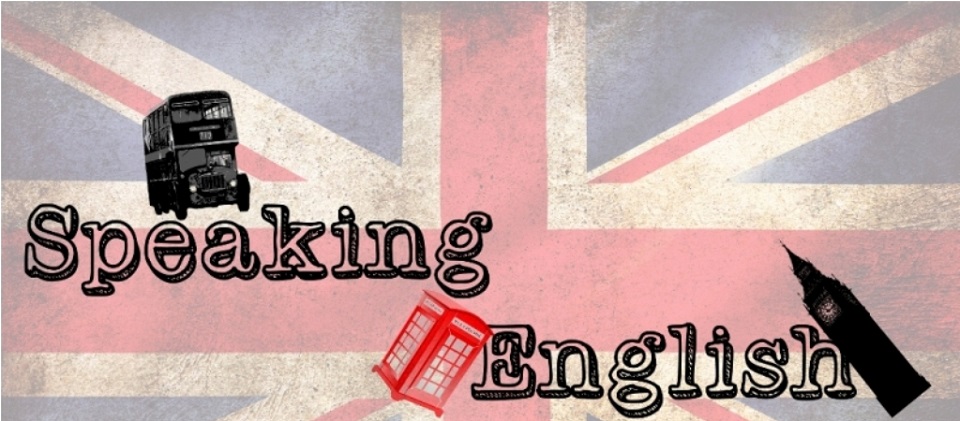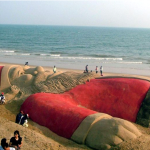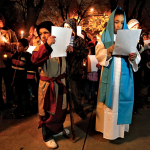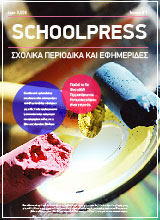By Kalogirou Spiridoula – Kalogirou Ioanna – Alexiou Aggeliki – Giannakopoulou Elisabeth & Arvanitopoulou Vasia (B class)
It is true that Christmas period is considered by many people to be the best and most anticipated time of the year. Christmas is celebrated glamorously all over the world and the Christmas spirit lasts from many days before the celebration (preparing for it) till the early days of the January. During this period people get together with their families, go shopping, walk around their decorated cities, go holidays, get rest. These are days of joy, love, peace, happiness and understanding. But every part and corner of the word has special customs and different ways of celebrating Christmas according to their tradition.
In Greece Christmas is one of the biggest religious celebrations. In Christmas Eve, New Year’s Eve and Epiphany, in the morning, the children go from door to door and sing the carols, while in some areas at midnight people light fires to drive away the goblins. Before the Christmas day the Christians fast the meat and the diary products for forty days and during the Christmas Eve the olive oil and the wine too. Another custom that occurs in Peloponnese is the Christmas cake ( a bread crosswise embroidered) which is made by the housewives and on Christmas Day is rolled on the table. If it stops on the reverse side, the year will be bad, while if it stops on the right one, the year will be good. The traditional dish on the Christmas table is pork. There is plenty of wine as well. On New Year’s Day, it is cut the New Year cake, which contains a gold coin. The person to whose piece happens to be the coin is considered to be lucky all year long. The tradition wants the houses to decorate small ships instead of the foreign custom of the tree. On the Epiphany Day, when we celebrate the baptism of Jesus Christ, the waters are sanctified and people fall into the sea to catch the Holy Cross.
Christmas period in Spain starts on 22nd of December with the grand Christmas Lottery. Christmas for Spanyards is the most important celebration of the Year ,followed by New Year’s day which is called “Noche Vieja” and the Holy Epiphany Day of 6th January, which is known as “Dia de Reyes”. Christmas’ Eve or “Noche Buena” is the night when all family is gathered, with the rooms decorated with pine tree branches and lit candles, giving a sense of devoutness in the atmosphere.
After the Christmas Dinner,which is full of local specialties,all family attends the Christmas Mass at the temple. Οne of the famous customs of the Period is the rooster “Misa de Gallo”,which is a reminder of the cock that according to tradition first gave the world the gladsome announcement of the Birth of Christ.
Christmas in Scandinavia,which is called “Jul” is associated with many customs,which date back to ancient agricultural customs of Winter and harvest. Santa ,here called “Julenissen, along with his aides brings presents and jollity to houses and stables. On Christmas Eve,children fill plates with wheat flour as a present to Julenissen,who has come to visit them, making a long journey from Lapland to Norway,traveling on his reindeer-pulled sleigh. Christmas Day is called Julbrod and the customary dinner of the Day would be comprising up to 60 different dishes for family and friends to enjoy.
For the Czechs Christmas Period starts on4th December, memory day of the St Barbara,a great Martyr of the early Christian Church. On that day,cherry tree branches are cut across the country to decorate houses and put in vases filled with water. Ιf they have blossomed by Christmas, its assign of good fortune and probably of an impending marriage. Branches along with other ornaments are placed in baskets all around the household.
The United States of America has many different traditions and ways that people celebrate Christmas, because of its multicultural nature.
Some Americans use pop corn threaded on string to help decorate their Christmas tree. Americans send out Christmas cards, like Carol singing. They like to decorate the outside part of their houses with lights and sometimes even statues of Santa Claus, snowmen and reindeer. Some cookies and glasses of milk are often left out as a snack for Santa on Christmas Eve. Town and citied often decorate the streets with lights to celebrate Christmas. The most famous Christmas street lights in the USA are at the Rockefeller Center in New York where there is a huge Christmas tree with a public ice skating ring in front of it over Christmas and the New Year. In Hawaii Santa is called Kanakaloka. Customs such as Mumming take place in some communities. On New Year’s Day in Philadelphia there is a Mummer’s Day parade which lasts over six hours. Clubs called ‘’New Years Associations’’ perform in amazing costumes which take months to make. There are four categories which are judged. In the Southwest USA, there are some special customs which have some similarities to those in parts of Mexico. These include ‘luminarias’ or ‘farolitos’ which are paper sacks partly filled with sand and then have a candle put in them. They are lit on Christmas Eve and are put the edges of paths. They represent ‘lighting the way’ for somewhere for Mary and Joseph to stay. A popular food at Christmas is tamales. In the south of Louisiana families in small communities along the Mississippi river light bonfires along the levees (the high river banks) to help ‘Papa Noel’ (the name of Santa in France) find his way to the children’s homes.
Christmas in Latin America:
In Ecuador people make scarecrows from wood, newspaper and fabric and they fill them with fireworks. When they burn them, they lighten the sky, saying goodbye to the year that has passed, along with all the sad things it had possibly brought with it.
When it’s Christmas it is summer in Brazil, so they can celebrate Christmas by sailing boats and picknicking. Before they go to bed, children tidy their shoes in order Papa Noel to find them. In the morning, before breakfast, they find the presents in their shoes and they look for the rest of them around the house.
This is Christmas in Brazil! A huge Santa Claus made out of sand in Santa Beach.
In Mexico, a special and very popular Christmas custom for children is the piñata. It’s a big ball with vivid colours, which is filled with sweets and small games. With their eyes closed, the children try to break it. When, eventually, the piñata is broken, the children run in the floor to get the games and the sweets.
In Puerto Rico, the children sing the carols wearing handmade costumes which look like the ones woren by the Three Wise Men. Their reward is food and drinks and sometimes with money. During the night of 5th of January, children leave water, grass and wheat under their beds for the Men’s camels and the following day they see them replaced by gifts!
In Guatemala, 9 days before Christmas the roads are flooded by the so-called posadas, processions which represent the search for shelter on the way to Beethlem. With drums and crackles, groups of people sing the Christmas carols from house to house. The people accompanying them hold food, such as stuffed rolls, and sing. On the ninth day the Divine Infant is added to the manger and the ninth house that will host the procession has to be large enough to hold all of them in order to celebrate the event.
The posadas’ custom in Guatemala
Sources:
el.wikipedia.org
http://efisecrets.gr/poies-xwres-ksodeuoun-ta-oerissotera-xrimata-ta-xristoygenna/
http://newpost.gr/politiki/179424/perierga-ithi-kai-ethima-gia-tin-protoxronia-apo-olo-ton-kosmo-
http://espanolgr.blogspot.gr/2009/12/blog-post_23.html
http://expatbrazil.co.uk/wp-content/uploads/2013/12/Christmas-in-Brazil-Santa-Beach.jpg)





